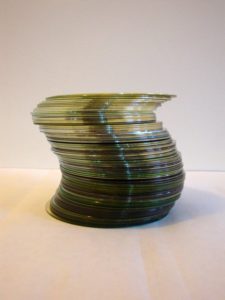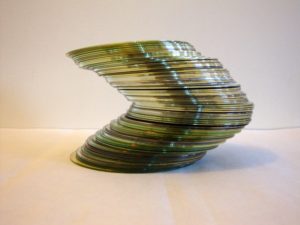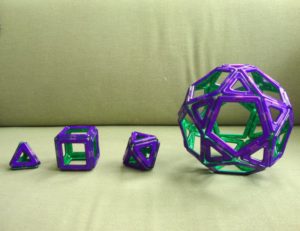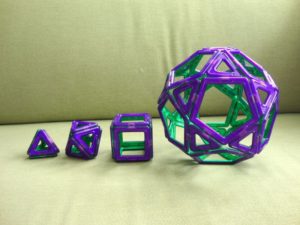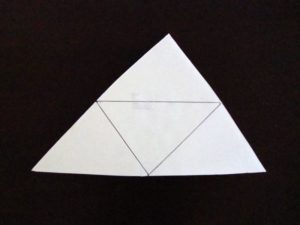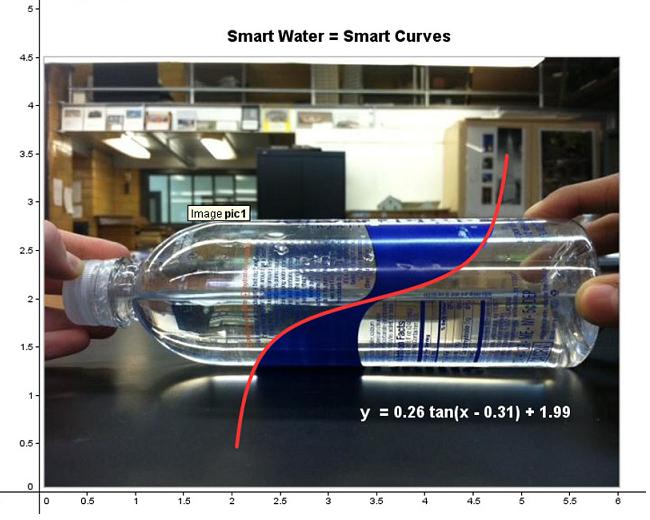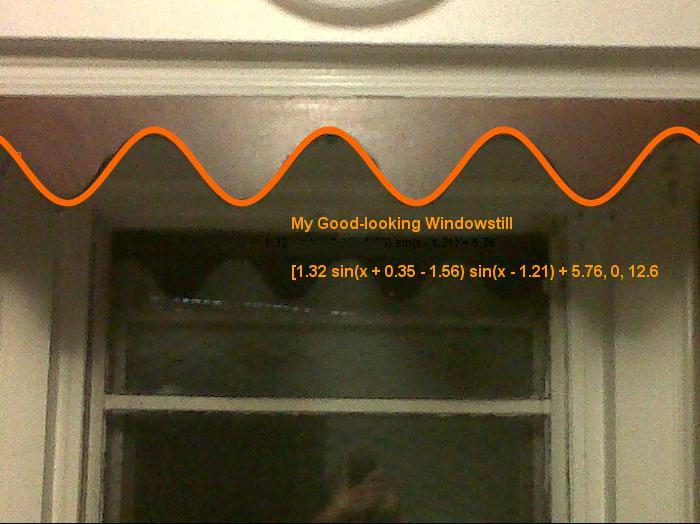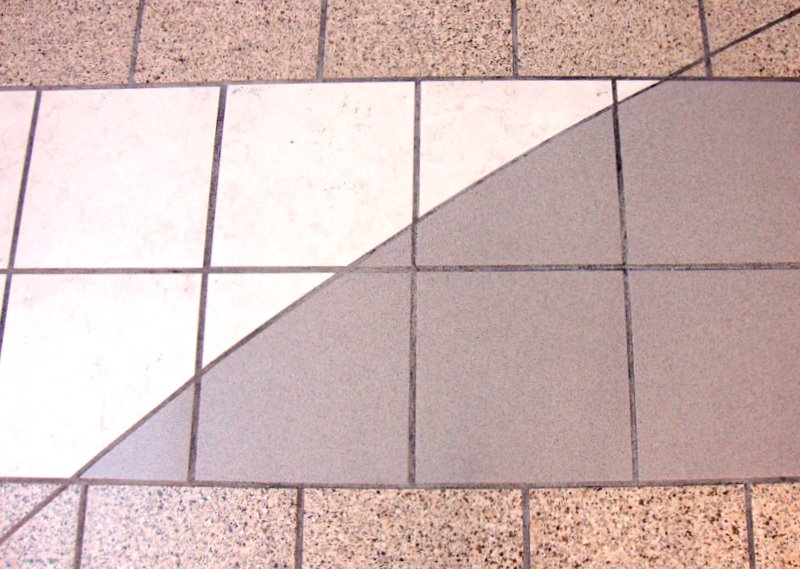After demonstrating Cavalieri’s Principle with empty CD cases, I thought I’d do the same with the actual CDs.
Here we see a bunch of discs stacked up to make a right cylinder.
To compute the volume of this cylinder, it would be sufficient to know (a) the volume of one CD, and (b) the number of CDs in the stack. We would simply multiply the two together to get the volume.
The argument is less obvious, but essentially the same, regardless of how the CDs are stacked! So this “prism”
has the same volume as the original cylinder. Now, this object should also have the same volume
however some center-of-mass issues may foil our elegant mathematical demonstration.
Related Posts

